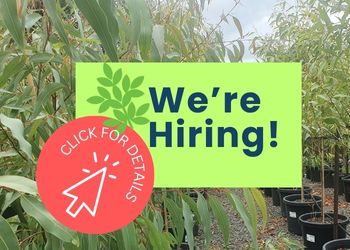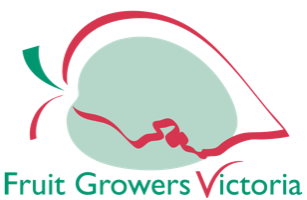
It has mostly likely seen 4 hot summers, 4 growing seasons, multiple storms and winds; been fed and watered regularly and pruned and repotted every year without fail. Having been nutrured in the production nursery, this now magnificent structure will thrive in the landscape and give many years of service and pleasure. What Value a Tree? Worth every cent you spend. Read about it here in an article we wrote for Landscape Contractor magazine.

What Value a Tree?
Working at Speciality Trees, an advanced tree production nursery in Victoria, and being conscious of sales enquiries, I am often amused, bemused and frustrated by conversations and perceptions regarding the price of advanced plant material – in our case trees and shrubs. This is not a piece on how businesses like ourselves price the products we grow, as all producers should strive for great material output and better working efficiencies, but rather an observation of how little the end consumer is aware of the time and effort it takes to grow quality advanced material and how people struggle to equate a strong, healthy, beautiful tree specimen with a monetary value.
I am really not sure why this is. Perhaps grass and green is just expected to exist in our lives that we simply assume it to always be there – like the sun and rain; permanent and without effort. I guess this is a comforting assumption but in a time poor society value needs to be attributed to all things grown including that of plant life and especially with advanced trees. While I remember Grandma buying flower seedlings every year for her garden when I was little, were those pert little colour pots so little and by-the-by to make me view the growing of them negligible and the value of them cheap? Time is money and plants do not get to market by themselves, hedging shrubs don’t automatically grow dense and bushy and big feature trees don’t survive the hand of Mother Nature without the support and nurturing they receive when growing courtesy of the production nursery.
Advanced stock by its very nature is bigger and stronger. While smaller stock is easier to handle, it is young material and in need of further care if it is to perform to expectation. A feature tree in our nursery has been nurtured in the production nursery for anywhere between 18 months and 5 years. To ensure permanency in the landscape once planted, it has been pruned multiple times over the course of its stay for structural robustness, been caressed by the sun, sheltered from damaging winds, watered daily and fed seasonally to promote vigorous yet steady growth. The quality of soil used and the regularity of re-potting and root pruning are vital to the development of its strong root system and care has been taken to schedule these events at the optimum time in its development.
If you take two small trees as tubestock, plant one in a garden bed and the other in a container kept in a production nursery, the container-grown specimen will be significantly bigger than the field grown tree. Like a kid in a lolly shop, the tree surely can’t believe its luck! Everything it needs to grow well will be taken care of. Any defective branch structures are fixed, if they can’t be, the tree is culled. You can be assured that the tree sold as an advanced specimen has been selected to perform in your landscape.
But let’s get back to the notion of value. And maybe we need to put this in a more everyday perspective. As consumers we can spend $250 on a mail box but baulk at the purchase of a three metre tree for around $250. Yet while both add value to the home in their own way, a cleverly selected three metre tree with its dense canopy and strong trunk planted in the garden will give back cool shade and aesthetic pleasure for many, many years to come and continue to grow in value.
End consumers need to be taught the benefits of planting advanced trees in their garden. With the purchase of a mature tree you buy growing time, so the gain is felt in the immediate provision of shade and dense screening for example, and in finding a quick and practical solution to an outside living issue. There are also aesthetic qualities to consider and micro climates created where other plants can perform at their best. Advanced specimens provide instant visual focus or act to soften the lines of surrounding buildings and structures.
We entertain under them, swing off them and climb them as kids. We watch them change colour and develop over many seasons adding layers of beauty (and value) to the garden and in the process, creating an abundance of life-long memories. The tree becomes part of the family, woven inexplicably into the texture of celebrations and events through each generation. What now the value of the tree? The beauty about big stuff is that all the reasons why the purchase was made in the first place continue on indefinitely. That $250 purchase chosen for its colour, distinct features and visual attractiveness or practical solution doesn’t go away over time, but is enhanced.
In a time of increasing environmental awareness and a renewed interest in greening our homes trees are really coming into their own. Their contribution to the reduction of carbon in the environment is well documented and landscapers of today are far more aware of the value of green life in landscape planning, over areas of stone, concrete, asphalt and brick.
Trees benefit us in many ways. We all now acknowledge that trees conserve water, provide habitat for wildlife, protect from winds, lower air temperature and improve the air we breathe. They reduce energy consumption and have a positive effect on mental health. Just by being amongst them, they have the effect of reducing day-to-day stress and anxiety.
Trees increase property values. As a community we place great value on the aesthetics of our environment, in fact the highest valued suburbs in our cities are the leafy ones. There is an enormous amount of work involved with urban landscape design and implementation, which is necessary for long term tree health as well as for public safety. It is therefore crucial that the right tree is chosen for any given urban situation.
Trees blend different environments together, breaking up the line of the built environment, helping to soften structures and blend with the surrounding landscape. Plants have a presence that provides definition to a space; hedges and screens for example define an area and provide privacy; trees add a canopy or ceiling, providing a sanctuary in busy developing cities. Residents are beginning to value trees so highly that they will almost go to any lengths to retain them. Councils now take a much more consultative approach to what is planted. All these issues make tree selection a very important issue which in turn works to increase the value of trees within our community.
In this world you get what you pay for. It is therefore important to know what makes a premium tree specimen and only buy from suppliers who produce and supply premium quality material. By doing this you are then supported by quality production processes, techniques and advice, provided by people committed to improving their businesses in an environmentally sustainable way.
The Nursery and Garden Industry Association has a number of accreditation levels that aim to acknowledge excellent stewardship in this area. The Nursery Industry Accreditation Scheme Australia (NIASA), awarded to production nurseries operating in accordance with ‘best practice’ guidelines, has recently been boosted by the introduction of an Environmental Management System (EMS) called EcoHort™ which assesses a nursery’s pest and weed management programs, chemical use, water use and irrigation practices.
Both schemes hold nurseries accountable for ongoing productivity in a responsibly sustainable way.
Nurseries that comply are awarded accreditation in recognition of their environmental leadership. For customers this equates to the supply of high quality, sustainably produced plant material increasing that businesses chance of success in a competitive market.
To go back to our earlier example, that healthy three metre feature tree ready to thrive in the landscape post planting is worth a great deal including your peace of mind. The effort taken to produce a well grown plant is highly skilled and valuable and gives the plant an opportunity to reach its full potential, to live beyond our own lives and add to the quality of lives in generations to come.
A visit to a nursery specialising in advanced material will indeed put this notion of value to rest. Seeing large trees in person and understanding what makes a premium tree specimen is an exercise worth undertaking for every landscaper and landscape contractor who is serious about customer loyalty and return business. Be confident in the material you are recommending as spending less on poor quality stock seldom achieves optimum results in the landscape, be that 6 months, 10 years or 50 years from now.
Receive all the latest news, product information, collections, projects, tips and special offers straight to your inbox each month or so.
Receive all the latest news, product information, collections, projects, tips and special offers straight to your inbox each month or so.
Treefinder can help you identify the perfect tree for your next project!
With over 400 tree varieties for review, the Treefinder app enables you to conveniently browse and compile a list of trees suitable for a number of common landscaping uses - from attracting birds to creating a formal screen or hedge. By selecting desired size, foliage, and a few categories, Treefinder opens up a world of possibilities.
Once you've found the perfect tree you can click through to our website for more information, availability and a quote.

We are specialists in the environmentally sustainable production of premium quality advanced landscaping trees and screens.
For more than 48 years Speciality Trees has been a leader in the production and supply of advanced environmentally sustainable, containerised landscape trees for local government, the landscaping industry and retailers.
Learn more








